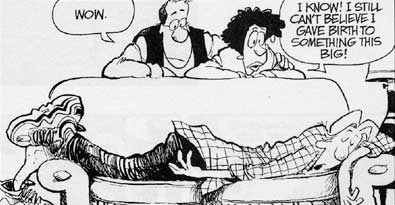
Research Extra-credit (4
points). The following is the information found on the sing in
sheet that was passed around on Thursday and Friday. If you have
any questions for the researcher feel free to email at: quin@ufl.edu
The lab is in room 1423-E
in Norman Hall. Basically it is the newer part of the Norman
building and located on the second floor across from the parking
garage. It is probably easiest to go to the second floor via the
stairs on the far southeast side of Norman Hall and then take the hall
to the left nearly all the way down. As you are doing that you
will see the room numbers going up from 1401.
July 29th: Concept list for exam #3
The final exam differs from the previous exams in that it draws more from a smaller body of information that mainly comes from the text, includes 12 to 15 general (semi-cumulative) questions from the previous chapters, andt also maintains two extra-credit items. With the exception of the ‘semi-cumulative’ section where the topics indicated on this list will definitely be present on the exam, the rest of the review covers ~ 90% of what is on the exam itself. I was going to cover the topic of teens and work beyond that of the text, however since we simply ran out of time to adequately cover issues, information in Chapter 7 (recap boxes only) will become the extra-credit questions.
Chapter 6: Schools
The origins of compulsory education
Higher-order thinking
Characteristics of good schools (very general)
School size (from text but also discussed in class)
School transitions (from text but also discussed in class)
Tracking (very general)
Learning disabilities
Gifted Adolescents
Desegregation and private schools (general)
School Climate (self-fulfilling prophecy and engagement [esp. Newman, 1992])
Middle Schools/Junior high philosophies (from class and text)
Chapter 12: Achievement
Achievement motivation and underachievement
The importance of beliefs (from text discussed briefly in class)
Learned Helplessness (related to above)
The impact of community, parents, and friends (general)
SES and cultural differences
TIMSS, NAEP, SAT, and FCAT (from class)
-- Specifically trends and/or uses
-- Keep the SAT issues in mind.
TIMSS (Purpose of the program, differences between Japan, US, and Germany)
Keep in mind that this was a highly influential study for teens and education.
Occupational Choices (parents and peers)
Chapter 13: Psychosocial Problems
Primary and Secondary preventions
Internalizing disorders (suicide, depression, ect. basic issues from text and class)
Externalizing problems (general issues)
Drug use (specifically smoking, alcohol, and illicit drugs in general)
The concept of comorbidity
Antisocial Behavior
Life-course persistent/adolescent limited
Stress and Coping (pp. 451 - 452)
The Comprehensive Questions:
Eating Disorders (In general from text...Biological Transitions chapter)
Parenting Styles (Ch. 4)
Self-Esteem issues (Ch. 8)
- Contributions and antecedents to self-esteem (text)
- Induced, Sociometer, Jamesian model (competence/valued domains), and ideal self (class and [indirectly] text)
- Seligman's critiques (in class)
- Gender and Ethnic issues (text)
Cliques and Crowds (Chapter 5) (text and discussed in class)
Popularity (Chapter 5) this includes relational agression and hostile attributional bias.
The final exam differs from the previous exams in that it draws more from a smaller body of information that mainly comes from the text, includes 12 to 15 general (semi-cumulative) questions from the previous chapters, andt also maintains two extra-credit items. With the exception of the ‘semi-cumulative’ section where the topics indicated on this list will definitely be present on the exam, the rest of the review covers ~ 90% of what is on the exam itself. I was going to cover the topic of teens and work beyond that of the text, however since we simply ran out of time to adequately cover issues, information in Chapter 7 (recap boxes only) will become the extra-credit questions.
Chapter 6: Schools
The origins of compulsory education
Higher-order thinking
Characteristics of good schools (very general)
School size (from text but also discussed in class)
School transitions (from text but also discussed in class)
Tracking (very general)
Learning disabilities
Gifted Adolescents
Desegregation and private schools (general)
School Climate (self-fulfilling prophecy and engagement [esp. Newman, 1992])
Middle Schools/Junior high philosophies (from class and text)
Chapter 12: Achievement
Achievement motivation and underachievement
The importance of beliefs (from text discussed briefly in class)
Learned Helplessness (related to above)
The impact of community, parents, and friends (general)
SES and cultural differences
TIMSS, NAEP, SAT, and FCAT (from class)
-- Specifically trends and/or uses
-- Keep the SAT issues in mind.
TIMSS (Purpose of the program, differences between Japan, US, and Germany)
Keep in mind that this was a highly influential study for teens and education.
Occupational Choices (parents and peers)
Chapter 13: Psychosocial Problems
Primary and Secondary preventions
Internalizing disorders (suicide, depression, ect. basic issues from text and class)
Externalizing problems (general issues)
Drug use (specifically smoking, alcohol, and illicit drugs in general)
The concept of comorbidity
Antisocial Behavior
Life-course persistent/adolescent limited
Stress and Coping (pp. 451 - 452)
The Comprehensive Questions:
Eating Disorders (In general from text...Biological Transitions chapter)
Parenting Styles (Ch. 4)
Self-Esteem issues (Ch. 8)
- Contributions and antecedents to self-esteem (text)
- Induced, Sociometer, Jamesian model (competence/valued domains), and ideal self (class and [indirectly] text)
- Seligman's critiques (in class)
- Gender and Ethnic issues (text)
Cliques and Crowds (Chapter 5) (text and discussed in class)
Popularity (Chapter 5) this includes relational agression and hostile attributional bias.